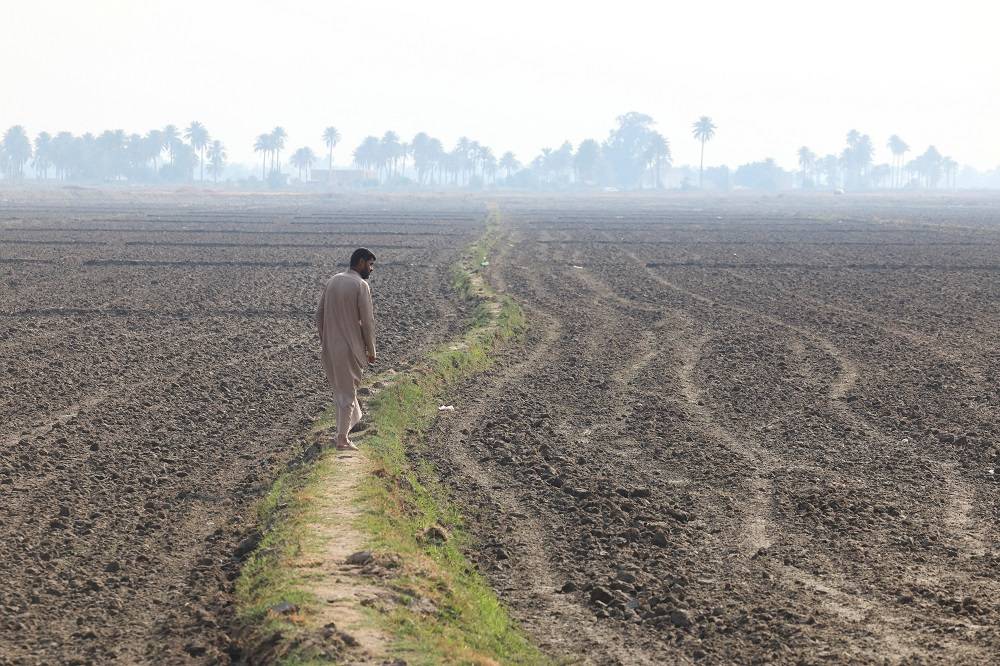A dispute between Israel and Lebanon over their maritime boundary has obstructed energy exploration in the eastern Mediterranean and risks exacerbating tensions between two foes.
After months of deadlock in US-mediated talks, Beirut on Sunday warned against any activity in the disputed area, responding to the arrival of a vessel to develop a field for Israel.
Lebanon has said the field in question, Karish, is in disputed waters. Israel denies this.
Here's what you need to know about the standoff:
What’s at stake?
Gas - potentially a lot of it.
Lebanon and Israel are located in the Levant Basin, where a number of big sub-sea gas fields have been discovered since 2009. Israel already produces and exports gas.
But while Israel has moved ahead, Lebanese hopes of producing energy have been hamstrung by political paralysis.
Lebanon's one and only attempt at drilling - an exploratory well in 2020 - found gas traces but no reservoirs, according to France's Total, part of a consortium with Italy's ENI and Russia's Novatek that was awarded Lebanon's first oil and gas offshore license in 2018.
A gas find would be a major boon for Lebanon, which has been mired in financial crisis since 2019. Eventually, such a discovery could fix Lebanon's long-standing failure to produce adequate electricity for its population.
Israeli officials have previously said they hoped the negotiations would take a short time and that an agreement would strengthen both countries' economies.
But while an agreement could allow both sides to benefit, the issue could risk conflict if unresolved.
Lebanon is home to the heavily armed, Iran-backed Hezbollah, which has fought numerous wars with Israel and has previously warned Israel against drilling in the disputed zone.
What is the dispute over?
Lebanon and Israel are at odds over the boundary separating their exclusive economic zones - an offshore area that a country can claim for resource extraction.
Israel claims the boundary runs further north than Lebanon accepts, while Lebanon claims it runs further south than Israel accepts, leaving a triangle of disputed waters.
After indirect negotiations began in 2020, Lebanon expanded its claim. Israel then did the same.
Karish became part of the zone Lebanon was disputing after Beirut expanded its claim, according to Laury Haytayan, a Lebanese oil and gas expert.
Lebanon has stated that Karish was in the disputed area in a letter to the United Nations, the presidency said on Sunday.
Israel says Karish field, discovered more than a decade ago, is in its exclusive economic zone. Israeli Energy Minister Karin Elharrar said the Lebanese account was "very far from reality".
What does Hezbollah think?
Hezbollah has been a sworn enemy of Israel since it was established in 1982 by Iran's Revolutionary Guards. The group has said the talks are not a sign of peace-making and threatened action if Israel violates Lebanese rights.
But Hezbollah is more deeply involved than ever in Lebanese state affairs, and wants to see Lebanon's offshore energy resources developed. It has not stood in the way of the US-mediated indirect talks and has said it will agree to whatever the government agrees.
Is there a risk of conflict?
The last major war between Israel and Hezbollah in Lebanon was in 2006. The border area has remained largely calm since. Analysts believe both sides want to avoid another conflict.
But Hezbollah leader Hassan Nasrallah said last year Israel was wrong if it thought it could act as it pleased before a solution was reached, and the group would "act accordingly" when it finds that Lebanese oil and gas is in danger.
Following the latest spat, Lebanon said it would invite a US envoy to resume negotiations to prevent any escalation and Israel's defense minister said the matter was a civilian issue to be resolved diplomatically.










